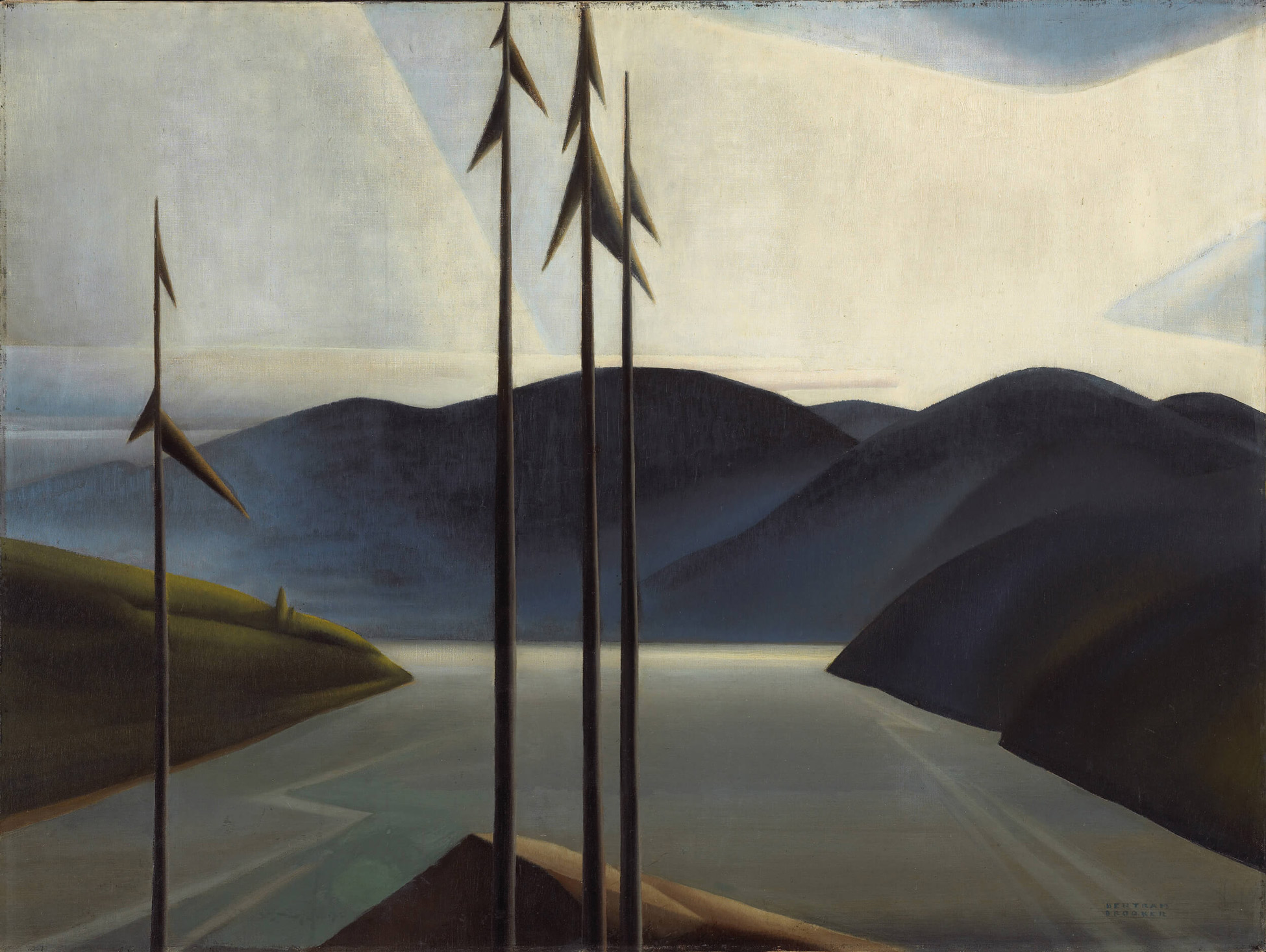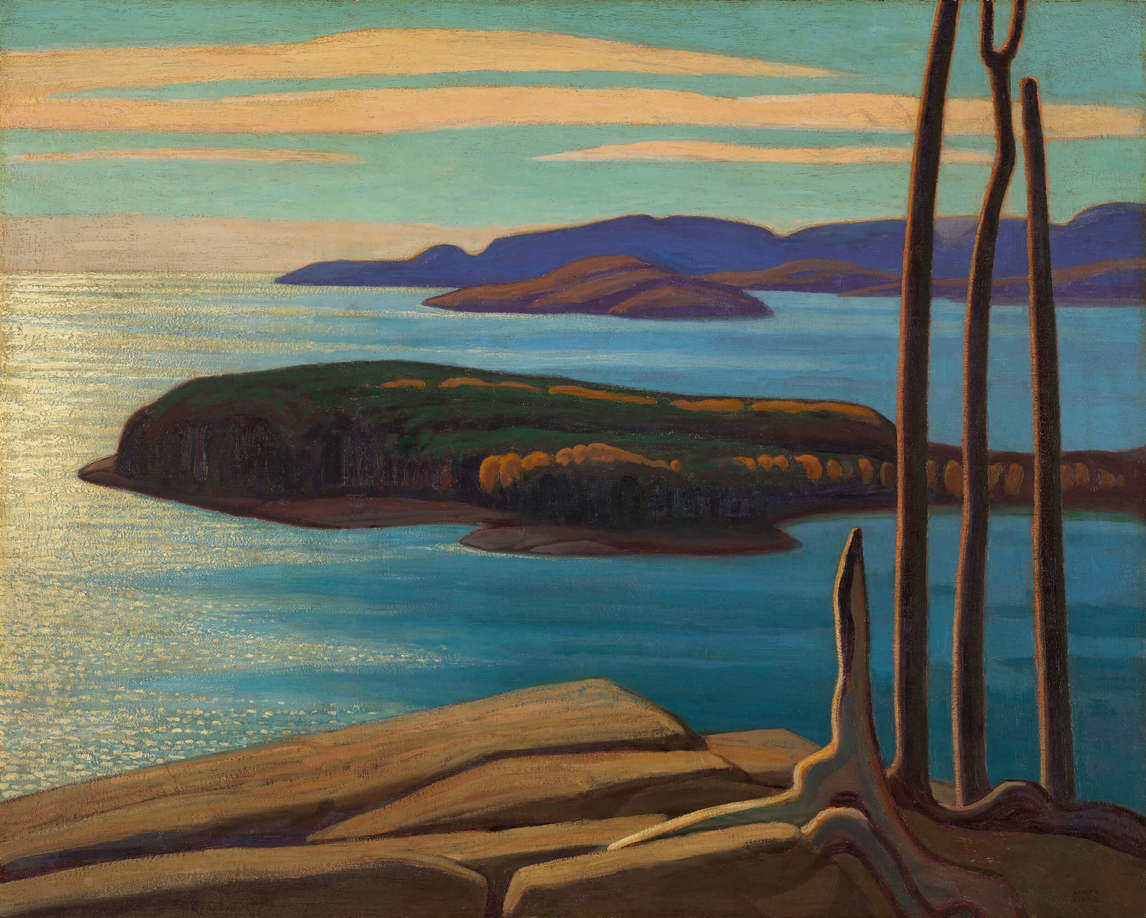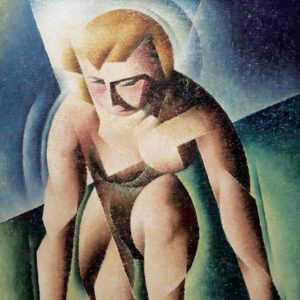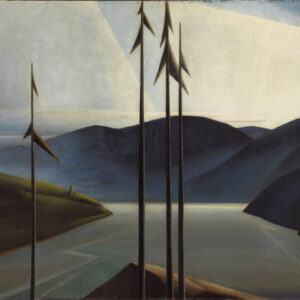The St. Lawrence 1931

Bertram Brooker, The St. Lawrence, 1931
Oil on canvas, 76.9 x 101.9 cm
National Gallery of Canada, Ottawa
The precise geometric lines of this canvas create what Brooker would later term “an awakening of the sense of harmony between man and the universe.” Its inspiration was a mystical moment that Brooker wrote about in his poem “silence”:
he stands still
in the shadow of three silver birches
looking out over the perfectly placid bay
out to the smooth meeting of the hills
at the other side of the whitening water
and the dim massed shell-pink hummocks of cloud.

The poem was written after visiting the Murray Bay (now La Malbaie) region of Quebec in the summer of 1931 at the urging of Lawren Harris (1885–1970) and A.Y. Jackson (1882–1974). Brooker made the sketch that is the basis for this painting while on this journey. The starkly simple landscape, in which the sky, trees, river, mountains, and foreground are rendered in such a geometric, quasi-abstract manner, resembles Lawren Harris’s Lake Superior and Rockies images of this period, as in Lake Superior, c.1924, and Afternoon Sun, North Shore, Lake Superior, 1924. On seeing the painting, Harris told Brooker that he did not like the trees. Perhaps Harris thought that The St. Lawrence too obviously imitated and possibly parodied him. By 1931 Harris had become fixated on moving toward abstraction, a mode of expression in which Brooker had already been very successful. Now he saw Brooker seemingly retreating to the form of expression of which he was trying to purge himself.
In The St. Lawrence sky, water, mountains, and trees are clearly representational, but Brooker reduces them to essentials and, in the process, bestows upon them an otherworldly look. Brooker demonstrates that he can employ the representational tradition and infuse it with spiritual meaning. In so doing he created a work that very much fits within the Group of Seven tradition, and it was exhibited in the Group’s exhibition in 1931.

 About the Author
About the Author
 More Online Art Books
More Online Art Books
 Acknowledgements
Acknowledgements